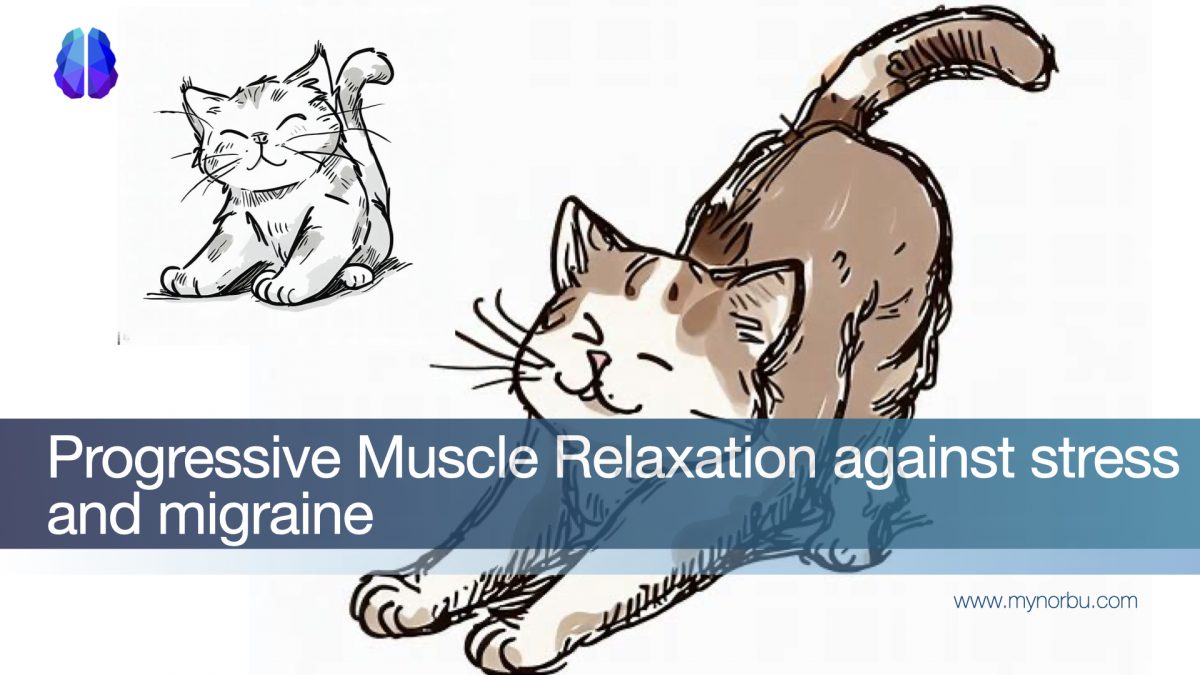Stress makes muscles tense. In turn, tense muscles send alarm signals to the brain. So, one gets into a vicious circle: tense muscles send danger signals to the brain, anxious thoughts arise in the mind, which lead to new tension in the body, which leads to chronic stress and exhaustion.
Evolutionarily, humans relieved muscle tension from stress through inevitable physical activity: running away or confronting danger. In the modern human body, stress often finds no release and remains in the body in the form of muscle tension for a long time.
Norbu App have added a new exercise «Get into Recoursegul state» part of which is based on PMR and aimed at breaking this vicious circle. The exercise imitates the evolutionary mechanism of stress relief by alternating between muscle tension and relaxation.
About Progressive Muscle Relaxation
Progressive muscle relaxation (PMR) is an anxiety-reduction technique first introduced by American physician Edmund Jacobson in the 1930s.The technique involves alternating tension and relaxation in all of the body’s major muscle groups.
If you have an anxiety disorder, such as generalized anxiety disorder or social anxiety disorder (SAD), your muscles are probably tense quite often. By practicing PMR, you will learn how a relaxed muscle feels different from a tense muscle.
If you practice this technique correctly, you may even end up falling asleep. If so, congratulate yourself on obtaining such a deep level of relaxation, and for the work that you did up to that point.
Uses for Progressive Muscle Relaxation
Progressive muscle relaxation can be helpful for a range of reasons, including:
- Anxiety
- High blood pressure
- Lower back pain
- Migraine
- Muscle tension
- Neck pain
- Stress
Chronic stress and anxiety can contribute to various health problems. Health complications linked to chronic stress include depression, diabetes, heart disease, and irritable bowel syndrome.
Progressive muscle relaxation can also be part of a toolbox of stress management techniques that can improve health and well-being in the long term.
Whole-body technique
Feet
- Bring your attention to your feet.
- Point your feet downward, and curl your toes under.
- Tighten your toe muscles gently, but don’t strain.
- Notice the tension for a few moments, then release, and notice the relaxation. Repeat.
- Become aware of the difference between the muscles when they’re tensed and when they’re relaxed.
- Continue to tense and relax the leg muscles from the foot to the abdominal area.
Abdomen
- Gently tighten the muscles of your abdomen, but don’t strain.
- Notice the tension for a few moments. Then release, and notice the relaxation. Repeat.
- Become aware of the difference between the tensed muscles and the relaxed muscles.
Shoulders and neck
- Very gently shrug your shoulders straight up towards your ears. Don’t strain.
- Feel the tension for a few moments, release, and then feel the relaxation. Repeat.
- Notice the difference between the tensed muscles and the relaxed muscles.
- Focus on the neck muscles, first tensing and then relaxing until you feel total relaxation in this area.
You can try this practice for yourself right now in the “Get into a Resourceful State” exercise in the Norbu app



